کتاب شیمی تجزیه: مجموعه ابزار یک شیمیدان و تکنسین آزمایشگاه، ابتدا به ایمنی و اصول اولیه آزمایشگاه شیمی پرداخته و سپس متداول ترین تکنیکهای تجزیهای مانند اسپکتروسکوپی،کروماتوگرافی، FTIR, NMR, XRF, XRD, HPLC, GC-MS و برنامههای آزمایشگاهی مانند برنامه سیستم مدیریت اطلاعات آزمایشگاهی (LIMS) را مورد بررسی قرار میدهد. این کتاب یک راهنمای مفید و جامع برای شیمیدانها، تکنسینهای آزمایشگاه شیمی، دانشجویان و فارغ التحصیلان شیمی و پژوهشگران صنعت مواد شیمیایی، دارویی، آزمایشگاههای محیط زیست، پتروشیمی و پلیمر است.
TABLE OF CONTENTS
Preface xxiii
Author Biographies xxv
Acknowledgments xxvii
1 Chemist and Technician in the Analytical Laboratory 1
1.1 Introduction—The Analytical Chemist and Technician 1
1.2 Today’s Laboratory Chemist and Technician 1
1.3 ChemTech—The Chemist and Technician Toolkit Companion 1
1.4 Chapter Layout 2
1.5 Users of ChemTech 6
2 Introduction to the Analytical Laboratory 7
2.1 Introduction to the Laboratory 7
2.2 Laboratory Glassware 7
2.3 Conclusion 18
3 Laboratory Safety 19
3.1 Introduction 19
3.2 Proper Personal Protection and Appropriate Attire 19
3.3 Proper Shoes and Pants 20
3.4 Laboratory Gloves 20
3.5 General Rules to Use Gloves 22
3.6 Material Safety Data Sheet (MSDS) 22
3.7 Emergency Eye Wash and Face Wash Stations 23
3.8 Emergency Safety Showers 24
3.9 Fire Extinguishers 24
3.10 Clothing Fire in the Laboratory 25
3.11 Spill Cleanup Kits 25
3.12 Chemicals and Solvents 27
3.13 First Aid Kits 27
3.14 Gasses and Cylinders 29
3.15 Sharps Containers and Broken Glass Boxes 29
3.16 Occupational Safety and Health Administration (OSHA) 29
4 Basic Mathematics in the Laboratory 83
4.1 Introduction to Basic Math 83
4.2 Units and Metric System 83
4.3 Significant Figures 84
4.4 Scientific Calculators 86
4.5 ChemTech Conversion Tool 89
4.6 Chapter Key Concepts 89
4.7 Chapter Problems 92
5 Analytical Data Treatment (Statistics) 93
5.1 Errors in the Laboratory 93
5.2 Expressing Absolute and Relative Errors 94
5.3 Precision 94
5.4 The Normal Distribution Curve 94
5.5 Precision of Experimental Data 96
5.6 Normal Distribution Curve of a Sample 97
5.7 ChemTech Statistical Calculations 98
5.8 Student’s Distribution t Test for Confidence Limits 101
5.9 Tests of Significance 104
5.10 Treatment of Data Outliers 105
5.11 Chapter Key Concepts 106
5.12 Chapter Problems 107
6 Plotting and Graphing 109
6.1 Introduction to Graphing 109
6.2 Graph Construction 109
6.3 Rectangular Cartesian Coordinate System 110
6.4 Curve Fitting 110
6.5 Redrawn Graph Example 110
6.6 Graphs of Equations 111
6.7 Least-Squares Method 114
6.8 Computer-Generated Curves 115
6.9 Calculating Concentrations 119
6.10 Nonlinear Curve Fitting 119
6.11 Chapter Key Concepts 123
6.12 Chapter Problems 124
7 Using Microsoft Excel® in the Laboratory 125
7.1 Introduction to Excel® 125
7.2 Opening Excel® in ChemTech 125
7.3 The Excel® Spreadsheet 125
7.4 Graphing in Excel® 127
7.5 Charts in Excel® 2010 132
7.6 Complex Charting in Excel® 97-2003 132
7.7 Complex Charting in Excel® 2010 139
7.8 Statistical Analysis Using Excel® 141
8 Making Laboratory Solutions 147
8.1 Introduction 147
8.2 Laboratory Reagent Fundamentals 147
8.3 The Periodic Table 147
8.4 Calculating Formula Weights 148
8.5 Calculating the Mole 148
8.6 Molecular Weight Calculator 148
8.7 Expressing Concentration 148
8.8 The Parts per (PP) Notation 153
8.9 Computer-Based Solution Calculations 153
8.10 Reactions in Solution 157
8.11 Chapter Key Concepts 157
8.12 Chapter Problems 158
9 Acid–Base Theory and Buffer Solutions 159
9.1 Introduction 159
9.2 Acids and Bases in Everyday Life 159
9.3 The Litmus Test 159
9.4 Early Acid–Base Descriptions 160
9.5 Brǿnsted–Lowry Definition 160
9.6 The Equilibrium Constant 161
9.7 The Acid Ionization Constant 161
9.8 Calculating the Hydrogen Ion Concentration 162
9.9 The Base Ionization Constant 163
9.10 Ion Product for Water 164
9.11 The Solubility Product Constant (Ksp) 164
9.12 The pH of a Solution 166
9.13 Measuring the pH 167
9.14 Buffered Solutions—Description and Preparing 168
9.15 ChemTech Buffer Solution Calculator 170
9.16 Chapter Key Concepts 171
9.17 Chapter Problems 172
10 Titration—A Volumetric Method of Analysis 175
10.1 Introduction 175
10.2 Reacting Ratios 175
10.3 The Equivalence Point 176
10.4 Useful Relationships for Calculations 176
10.5 Deriving the Titration Equation 176
10.6 Titrations in ChemTech 177
10.7 Acid/Base Titration Endpoint (Equivalence Point) 178
10.8 Acid/Base Titration Midpoint 179
10.9 Acid/Base Titration Indicators 180
10.10 Titrations Using Normal Solutions 181
10.11 Polyprotic Acid Titration 181
10.12 ChemTech Calculation of Normal Titrations 182
10.13 Performing a Titration 183
10.14 Primary Standards 184
10.15 Standardization of Sodium Hydroxide 185
10.16 Conductometric Titrations (Nonaqueous Solutions) 186
10.17 Precipitation Titration (Mohr Method for Halides) 188
10.18 Complex Formation with Back Titration (Volhard Method for Anions) 189
10.19 Complex Formation Titration with EDTA for Cations 190
10.20 Chapter Key Concepts 194
10.21 Chapter Problems 195
11 Oxidation–Reduction (Redox) Reactions 197
11.1 Introduction 197
11.2 Oxidation and Reduction 197
11.3 The Volt 198
11.4 The Electrochemical Cell 198
11.5 Redox Reaction Conventions 198
11.6 The Nernst Equation 200
11.7 Determining Redox Titration Endpoints 202
11.8 Potentiometric Titrations 202
11.9 Visual Indicators Used in Redox Titrations 204
11.10 Pretitration Oxidation–Reduction 205
11.11 Ion-Selective Electrodes 206
11.12 Chapter Key Concepts 206
11.13 Chapter Problems 207
12 Laboratory Information Management System (LIMS) 209
12.1 Introduction 209
12.2 LIMS Main Menu 209
12.3 Logging in Samples 209
12.4 Entering Test Results 209
12.5 Add or Delete Tests 211
12.6 Calculations and Curves 212
12.7 Search Wizards 214
12.8 Approving Samples 218
12.9 Printing Sample Reports 220
13 Ultraviolet and Visible (UV/Vis) Spectroscopy 221
13.1 Introduction to Spectroscopy in the Analytical Laboratory 221
13.2 The Electromagnetic Spectrum 221
13.3 Ultraviolet/Visible (UV/Vis) Spectroscopy 221
13.4 UV/Visible Spectrophotometers 230
13.5 Special Topic (Example)—Spectrophotometric Study of Dye Compounds 234
13.6 Chapter Key Concepts 236
13.7 Chapter Problems 237
14 Fluorescence Optical Emission Spectroscopy 239
14.1 Introduction to Fluorescence 239
14.2 Fluorescence and Phosphorescence Theory 240
14.3 Phosphorescence 241
14.4 Excitation and Emission Spectra 242
14.5 Rate Constants 243
14.6 Quantum Yield Rate Constants 243
14.7 Decay Lifetimes 244
14.8 Factors Affecting Fluorescence 244
14.9 Quantitative Analysis and Beer–Lambert Law 248
14.10 Quenching of Fluorescence 249
14.11 Fluorometric Instrumentation 249
14.12 Special Topic—Flourescence Study of Dye-A007 Complexes 255
14.13 Chapter Key Concepts 257
14.14 Chapter Problems 258
15 Fourier Transform Infrared (FTIR) Spectroscopy 261
15.1 Introduction 261
15.2 Basic IR Instrument Design 261
15.3 The Infrared Spectrum and Molecular Assignment 263
15.4 FTIR Table Band Assignments 264
15.5 FTIR Spectrum Example I 270
15.6 FTIR Spectrum Example II 270
15.7 FTIR Inorganic Compound Analysis 271
15.8 Chapter Key Concepts 271
15.9 Chapter Problems 273
16 Nuclear Magnetic Resonance (NMR) Spectroscopy 277
16.1 Introduction 277
16.2 Frequency and Magnetic Field Strength 277
16.3 Continuous-Wave NMR 278
16.4 The NMR Sample Probe 280
16.5 Pulsed Field Fourier Transform NMR 280
16.6 Proton NMR Spectra Environmental Effects 280
16.7 Carbon-13 NMR 283
16.8 Special Topic—NMR Characterization of Cholesteryl Phosphate 287
16.9 Chapter Key Concepts 292
16.10 Chapter Problems 293
References 294
17 Atomic Absorption Spectroscopy (AAS) 295
17.1 Introduction 295
17.2 Atomic Absorption and Emission Process 295
17.3 Atomic Absorption and Emission Source 296
17.4 Source Gases and Flames 296
17.5 Block Diagram of AAS Instrumentation 296
17.6 The Light Source 297
17.7 Interferences in AAS 299
17.8 Electrothermal Atomization—Graphite Furnace 299
17.9 Instrumentation 300
17.10 Flame Atomic Absorption Analytical Methods 301
18 Atomic Emission Spectroscopy 303
18.1 Introduction 303
18.2 Elements in Periodic Table 303
18.3 The Plasma Torch 303
18.4 Sample Types 304
18.5 Sample Introduction 304
18.6 ICP-OES Instrumentation 305
18.7 ICP-OES Environmental Application Example 310
19 Atomic Mass Spectrometry 325
19.1 Introduction 325
19.2 Low-Resolution ICP-MS 325
19.3 High-Resolution ICP-MS 328
20 X-ray Fluorescence (XRF) and X-ray Diffraction (XRD) 333
20.1 X-Ray Fluorescence Introduction 333
20.2 X-Ray Fluorescence Theory 333
20.3 Energy-Dispersive X-Ray Fluorescence (EDXRF) 334
20.4 Wavelength Dispersive X-Ray Fluorescence (WDXRF) 337
20.5 Applications of XRF 341
20.6 X-ray Diffraction (XRD) 342
21 Chromatography—Introduction and Theory 351
21.1 Preface 351
21.2 Introduction to Chromatography 351
21.3 Theory of Chromatography 351
21.4 The Theoretical Plate Number N 355
21.5 Resolution RS 356
21.6 Rate Theory versus Plate Theory 357
21.7 Retention Factor k 361
References 362
22 High Performance Liquid Chromatography (HPLC) 363
22.1 HPLC Background 363
22.2 Design and Components of HPLC 363
23 Solid-Phase Extraction 381
23.1 Introduction 381
23.2 Disposable SPE Columns 381
23.3 SPE Vacuum Manifold 381
23.4 SPE Procedural Bulletin 381
24 Plane Chromatography: Paper and Thin-Layer Chromatography 395
24.1 Plane Chromatography 395
24.2 Thin-Layer Chromatography 395
24.3 Retardation Factor (RF) in TLC 398
24.4 Plate Heights (H) and Counts (N) in TLC 398
24.5 Retention Factor in TLC 399
25 Gas-Liquid Chromatography 401
25.1 Introduction 401
25.2 Theory and Principle of GC 401
25.3 Mobile-Phase Carrier Gasses in GC 403
25.4 Columns and Stationary Phases 404
25.5 Gas Chromatograph Injection Port 406
25.6 The GC Oven 415
25.7 GC Programming and Control 417
25.8 GC Detectors 418
26 Gas Chromatography–Mass Spectrometry (GC–MS) 421
26.1 Introduction 421
26.2 Electron Ionization (EI) 421
26.3 Electron Ionization (EI)/OE Processes 422
26.4 Oleamide Fragmentation Pathways: OE M+• by Gas Chromatography/Electron Ionization Mass Spectrometry 425
26.5 Oleamide Fragmentation Pathways: EE [M+H]+ by ESI/Ion Trap Mass Spectrometry 426
26.6 Quantitative Analysis by GC/EI–MS 429
26.7 Chapter Problems 431
References 433
27 Special Topics: Strong Cation Exchange Chromatography and Capillary Electrophoresis 435
27.1 Introduction 435
27.2 Strong Ion Exchange HPLC 435
27.3 CZE 435
27.4 Binding Constants by Cation Exchange and CZE 436
27.5 Comparison of Methods 446
27.6 Conclusions 448
References 448
28 Mass Spectrometry 449
28.1 Definition and Description of Mass Spectrometry 449
28.2 Basic Design of Mass Analyzer Instrumentation 449
28.3 Mass Spectrometry of Protein Metabolite and Lipid Biomolecules 451
28.4 Fundamental Studies of Biological Compound Interactions 455
28.5 Mass-to-Charge (m/z) Ratio: How the Mass Spectrometer Separates Ions 457
28.6 Exact Mass versus Nominal Mass 458
28.7 Mass Accuracy and Resolution 460
28.8 High-Resolution Mass Measurements 461
28.9 Rings Plus Double Bonds (r + db) 463
28.10 The Nitrogen Rule in Mass Spectrometry 464
28.11 Chapter Problems 465
References 465
29 Ionization in Mass Spectrometry 467
29.1 Ionization Techniques and Sources 467
29.2 Chemical Ionization (CI) 467
29.3 Atmospheric Pressure Chemical Ionization (APCI) 471
29.4 Electrospray Ionization (ESI) 472
29.5 Nanoelectrospray Ionization (Nano-ESI) 474
29.6 Atmospheric Pressure Photo Ionization (APPI) 477
29.7 Matrix Assisted Laser Desorption Ionization (MALDI) 483
29.8 FAB 485
29.9 Chapter Problems 489
References 489
30 Mass Analyzers in Mass Spectrometry 491
30.1 Mass Analyzers 491
30.2 Magnetic and Electric Sector Mass Analyzer 491
30.3 Time-of-Flight Mass Analyzer (TOF/MS) 496
30.4 Time-of-Flight/Time-of-Flight Mass Analyzer (TOF–TOF/MS) 497
30.5 Quadrupole Mass Filter 500
30.6 Triple Quadrupole Mass Analyzer (QQQ/MS) 502
30.7 Three-Dimensional Quadrupole Ion Trap Mass Analyzer (QIT/MS) 503
30.8 Linear Quadrupole Ion Trap Mass Analyzer (LTQ/MS) 506
30.9 Quadrupole Time-of-Flight Mass Analyzer (Q-TOF/MS) 507
30.10 Fourier Transform Ion Cyclotron Resonance Mass Analyzer (FTICR/MS) 508
30.11 Linear Quadrupole Ion Trap Fourier Transform Mass Analyzer (LTQ–FT/MS) 517
30.12 Linear Quadrupole Ion Trap Orbitrap Mass Analyzer (LTQ–Orbitrap/MS) 518
30.13 Chapter Problems 527
References 527
31 Biomolecule Spectral Interpretation: Small Molecules 529
31.1 Introduction 529
31.2 Ionization Efficiency of Lipids 529
31.3 Fatty Acids 530
31.4 Wax Esters 537
31.5 Sterols 542
31.6 Acylglycerols 548
31.7 ESI-Mass Spectrometry of Phosphorylated Lipids 551
31.8 Chapter Problems 556
References 557
32 Macromolecule Analysis 559
32.1 Introduction 559
32.2 Carbohydrates 559
32.3 Nucleic Acids 565
32.4 Chapter Problems 576
References 577
33 Biomolecule Spectral Interpretation: Proteins 579
33.1 Introduction to Proteomics 579
33.2 Protein Structure and Chemistry 579
33.3 Bottom-up Proteomics: Mass Spectrometry of Peptides 580
33.4 Top-Down Proteomics: Mass Spectrometry of Intact Proteins 590
33.5 PTM of Proteins 594
33.6 Systems Biology and Bioinformatics 614
33.7 Chapter Problems 618
References 619
Appendix I: Chapter Problem Answers 621
Appendix II: Atomic Weights and Isotopic Compositions 627
Appendix III: Fundamental Physical Constants 631
Appendix IV: Redox Half Reactions 633
Appendix V: Periodic Table of Elements 637
Appendix VI: Installing and Running Programs 639
Index 641
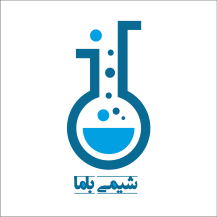
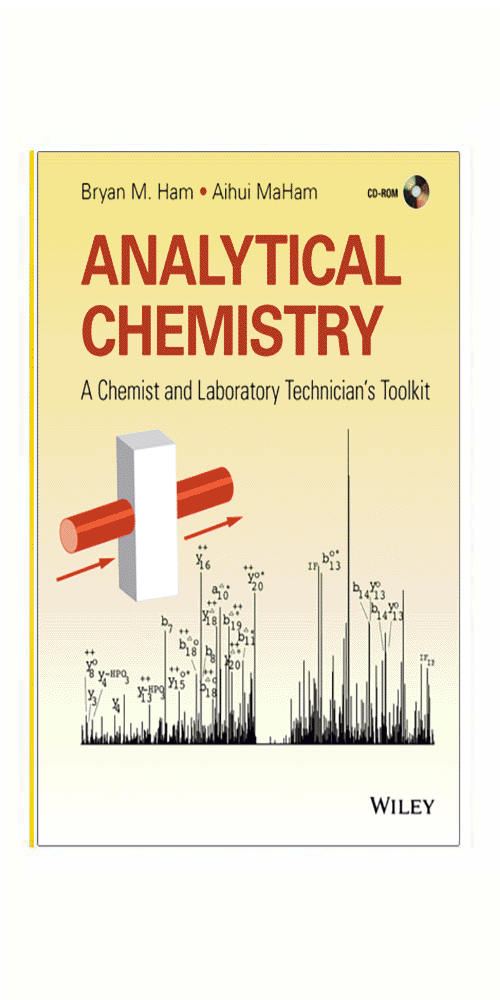
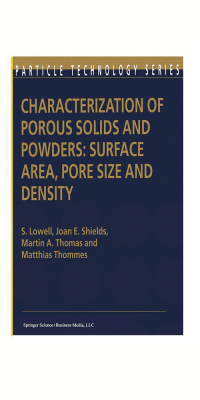
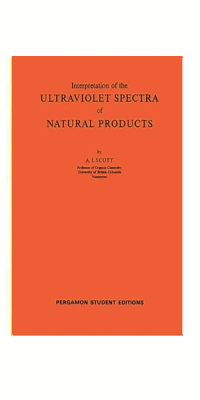
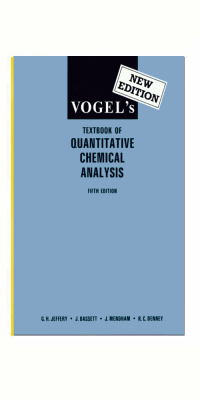
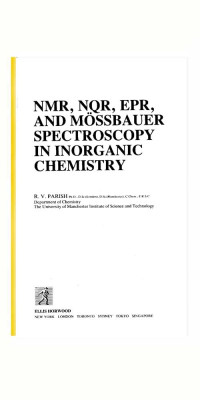

نقد و بررسیها
هنوز بررسیای ثبت نشده است.